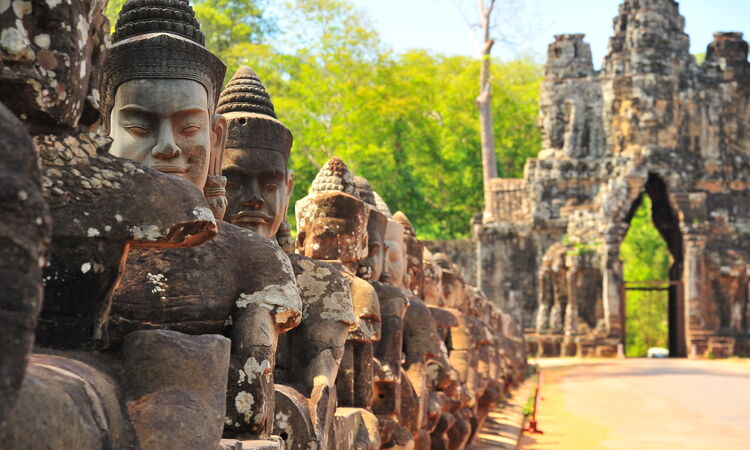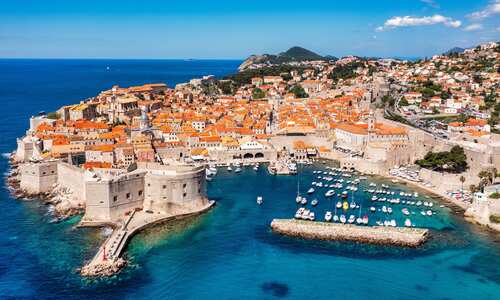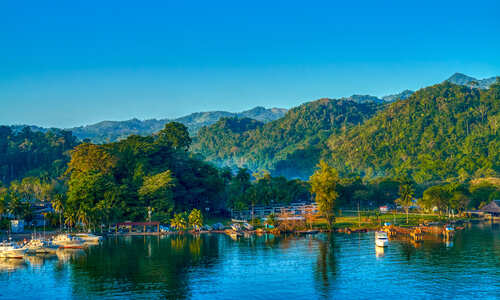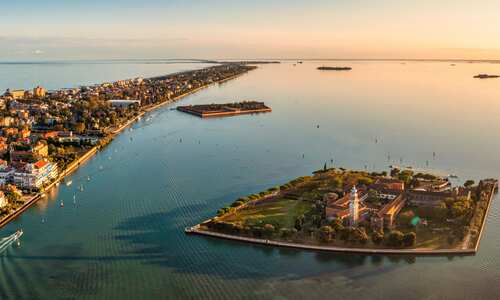Article content
4 March 2015 by Lowenna Waters
It's obvious that over time, places change. Whether that's caused by development, social or political change, environmental factors, or soaring popularity, evolution is unavoidable. Here, we've complied a list of the top ten places to visit now, as they will all experience significant change in the next few years.
When it comes to popularity and tourism, many countries have a burgeoning industry and will not be off-the-beaten-track much longer. Burma is an obvious example. Since it lifted its embargo on tourism, the number of tourists visiting has rapidly increased - raising 50 per cent from 2012 - 2013. Despite this, it still retains its traditional Asian lifestyle, beautiful Buddhist temples, and lush tropical forests. Likewise, Montenegro is a gem on the Adriatic Sea. Regularly overlooked by European travellers, its undisturbed beaches, stonewall architecture and rugged mountains are fast becoming a popular destination.
Global warming is another increasingly serious factor in change, impacting some of the world's most awe-inspiring natural wonders. Australia's Great Barrier Reef is under threat, as carbon dioxide has made the sea less alkali, affecting the ability of sea creatures to create coral. The impact of rising sea levels, caused by melting land ice and thermal expansion is threatening the existence low lying lands, including the Pacific Islands, Bangladesh and the Netherlands.
Social, political and economic development is another major factor. China, Vietnam and Laos are all undergoing extensive economic expansion, which in turn brings river dams, spreading cities, and migration. Travel now to see the destinations listed below before they change forever.
1. Vietnam

Vietnam is a land of charming teashops, thick forest and glorious beaches. One of the three countries of the Indochina Peninsula, it has thrown off its turbulent 20th century past, and is undergoing rapid economic growth with burgeoning foreign investment. This growth has brought a huge influx of people to its major cities like Hanoi and Ho Chi Minh City, with the latter one of the most rapidly modernising cities in the world.
Suggested Itinerary: Best of Vietnam
2. Montenegro

The pearl of the Mediterranean, Montenegro is located on the Adriatic Sea, and is rapidly becoming a prime holiday destination. Tipped as the ‘New Croatia', restaurants, upmarket hotels, and ultra-chic resorts are springing up. With its 17 untouched beaches, attractive medieval architecture, and rugged mountains, now is definitely the time to visit before the crowds arrive.
Suggested itinerary: Highlights of Montenegro
3. China

China is a land defined by its history: from the Great Wall of China to the Terracotta Warriors and Tiger Leaping Gorge, it has a rich and varied past. It is also, undisputedly, one of the world's fastest changing nations: a super power, with sprawling modern metropolises like Beijing, Shanghai and Hong Kong.
Suggested itinerary: Essence of China
4. Laos

Laos, a country defined by its jungle-clad valleys and fascinating Buddhist culture, is undergoing intensive economic and environmental change. The approval in 2012 to begin construction on a new £2.2bn dam on the Mekong River will affect the livelihood of millions. Visit now to experience one of Asia's last remaining off-the-beaten-track destinations.
Suggested Itinerary: Highlights of Laos
5. Brazil

Brazil is the most biologically rich country in the world, encompassing numerous ecological zones and natural wonders. The world's fifth largest country, it contains most of the Amazon jungle, with spectacular waterfalls, wildlife and landscapes. Unfortunately, as well all know, Brazil's forests are under threat. Around 17 per cent of the Amazon has been lost in the last 50 years due to deforestation for cattle farming, and Brazil sadly ranks as one of the world's top ten polluters.
Suggested Itinerary: Brazil - Wildlife & Waterfalls
6. Burma

Now is the time to visit Myanmar (Burma) - a land scattered with gilded pagodas, where a traditional way of life still endures. Since the end of military government rule in 2011, tourists are arriving in ever-increasing numbers, rising nearly 50 per cent from 2012 - 2013. With stunning Buddhist temples, a deep-rooted belief in hospitality, and a gentle, friendly people, it's one of the world's last remaining gems.
Suggested Itinerary: Best of Burma
7. Cuba

Cuba has a unique blend of decaying splendor, cultural prosperity, restricted freedoms and relative poverty. The largest of the Caribbean's islands, it is defined by its complex history, and fizzling culture - all punctuated by 1950s vintage cars. Cuba is changing, however, largely due to political reform. In 2014 there was a sweeping relaxation of vehicle imports, threatening to make one of its most distinctive anachronisms a thing of the past.
Suggested Itinerary: Cuba - a portrait of an island
8. The Pacific Islands and the Maldives

The Pacific island nation of Kiribati became the first country to declare that global warming is rendering its lands uninhabitable, asking for evacuation of its population. It's estimated that melting land ice and thermal expansion will raise sea levels by up to a metre before the end of the century, effecting low-lying nations from the South Pacific to the Maldives.
Suggested Itinerary: Sri Lanka & the Maldives
9. Australia's Great Barrier Reef

The Great Barrier Reef is under great threat from climate change and global warming. Since the industrial revolution, carbon dioxide has become trapped in the oceans, where it reacts with water to form carbonic acid that in turn bleaches the coral. The reef is considered one of the most susceptible places in the world to the impacts of climate change, and marine scientists are warning that if we don't act now, damage to the reef will be irreversible by 2030.
Suggested Itinerary: Sydney, Rock & the Great Barrier Reef
10. The Alps

The Alps have been warming at three times the global average, and projections show global warming will impact mountain areas in a severe way. Alpine glaciers are retreating and mountain plants are migrating upwards in search of a colder climate. As the snow level rise, the winter sports industry will also be negatively affected.
Suggested Itinerary: Swiss Alps by rail






